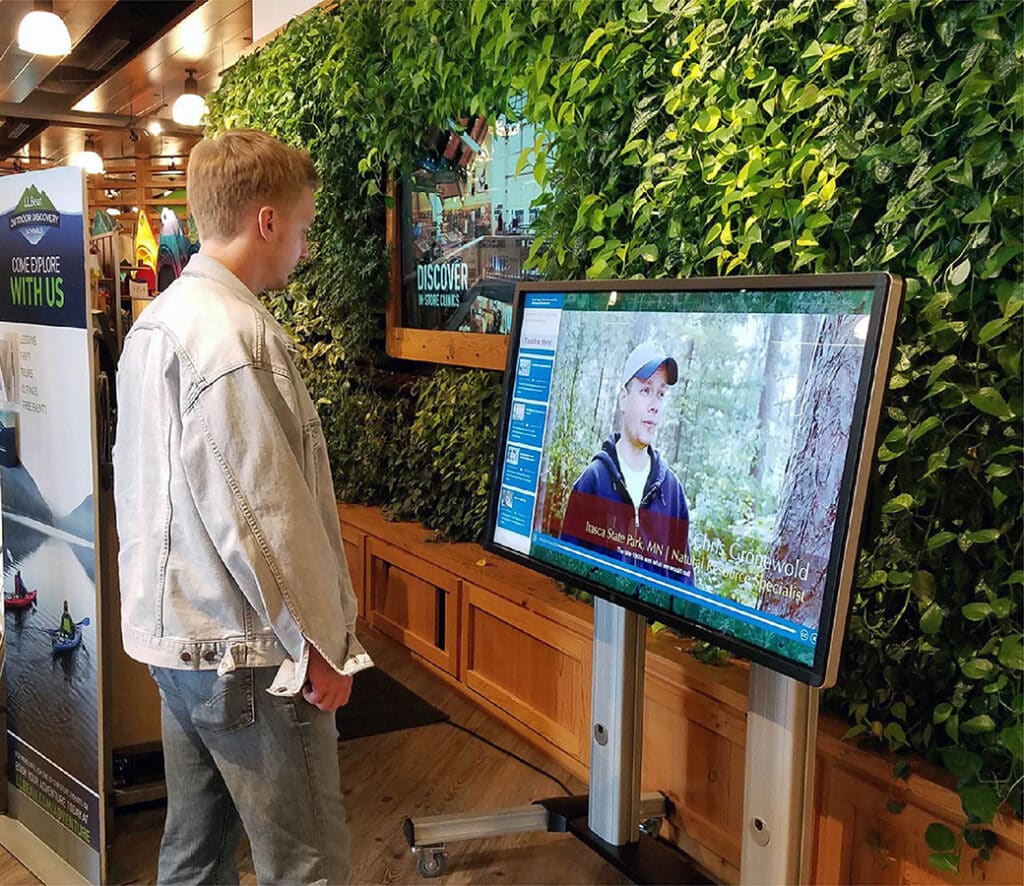
Kiosks along Minnesota’s North Shore make it easier for visitors to connect with the region’s cultural, natural, and environmental history.
Hamline University’s Center for Global Environmental Education created touchscreen installations to enhance the visitor experience in northern Minnesota. The kiosks, located in strategic spots, encourage visitors to engage more meaningfully with the region by offering galleries of stories, short videos, landscape panoramas, maps, and games. For the past four years, they have put the spotlight on the North Shore and western Lake Superior.
One of the creators, John Shepard, Associate Professor and Assistant Director at Hamline University, said that the multimedia installations were developed to raise awareness. “We want to celebrate the cultural and natural history of the region as well as important environmental issues,” he explained. Moreover, Shepard hopes they inspire a call to action and encourage people to engage in stewardship. He went on to add that the center’s mission is to “foster environmental literacy for everyone by featuring content that interests all ages.”

The documentary “A Sea of Change for Superior: The Warming of the World’s Largest Lake” was recently added to the gallery. In it, marathon swimmers set a new distance relay record while drawing attention to the effects of warming waters in Lake Superior.
Multimedia expands reach

The program launched in 2022. Shepard reports that over 600,000 visitors have already interacted with the kiosks. To reach a broad audience, organizers have placed the kiosks at rest stops between the Twin Cities and Duluth. Further north, visitors can find the kiosks at ranger stations, state parks, and several local businesses. The university also partnered with the Fond du Lac Tribe to place several on the reservation and incorporate Native stories into the multimedia content. They plan to eventually include stories and media from the USFS – Superior National Forest. To support the stories and seasonal changes, the kiosks are updated annually.
The multimedia content is not just accessible to visitors headed north. The interactive gallery is conveniently available to desktop users who live further away or are unable to travel. Funding has been provided by the Minnesota DNR Lake Superior’s Coastal Program and the National Oceanic Atmospheric Administration’s Office for Coastal Management.
More info:
- Multimedia Gallery Exhibit Kiosks – Hamline University Center for Global Environmental Education
- Lake Superior, The North Shore – Hamline University Center for Global Environmental Education
- Gooseberry Falls State Park

Wilderness guide and outdoorswoman Pam Wright has been exploring wild places since her youth. Remaining curious, she has navigated remote lakes in Canada by canoe, backpacked some of the highest mountains in the Sierra Nevada, and completed a thru-hike of the Superior Hiking Trail. Her professional roles include working as a wilderness guide in northern Minnesota and providing online education for outdoor enthusiasts.

